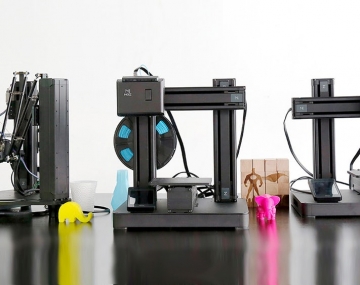3D Printers
When the microwave first hit, the technology behind it was rather difficult to grasp. This box will heat my food, and even better, there are items that are microwave safe that I can heat said food in without burning the house down! 3D printing is wonderous in many of the same ways. A three-dimensional space with materials that can fabricate something in a box and spit it out … built!
Perhaps the best part of 3D printing is no special tools are required. The item is manufactured on a built platform (layer by layer) following a blueprint of the physical object. Plastics are most common, but 3D printers can also handle metal as well. Depending on the size of the project, printing time can be anywhere from 4 to 18 hours. Let’s review some popular printers on the market today.
Voted one of PCMag.com’s Best of the Year 2018, the Dremel comes about as close as any 3D printer in meeting ease of setup, print consistency/quality, connectivity, build volume, software and price. No printer has it all, but the Demel is darn close. Geared towards engineers, product developers and like-minded professionals, the pros of the Demel is exceptional print quality, printing options via USB, Wi-Fi and Ethernet and it’s also very quiet. Some of the cons however are the limited choice in filament colors as compared to its competitors and the touch screen is not overly responsive.
On the pricier end, $3,500 +, the Form 2 is an upgrade from you guessed it, the Form 1. Larger build volume, an interactive touch screen, Wi-Fi connectivity, new and improved resin types and a powerful laser, the Form 2 is a leap ahead of its predecessor, putting it on par with the Dremel. Online reviews rave about the automatic resin feed. What one would assume would be a rather secondary feature, the resin feed is nearly as popular as Michael Jordan in his heyday. The only cons worth communicating are error messages have been known to pop up when no error is in sight, and master printing takes some time.
Perhaps the best of the three for general use, or those looking to jump into this sphere, the MakerBot is priced in an average range and like the previously mentioned Form 2, builds on the success of an earlier model, the original Replicator, with notable improvements in build volume, speed and design. This printer is very easy to use, the print quality is great for what it promises and as an open-frame printer the design is quite safe. Some of the cons are the setup can be tricky and the filament pricey.
If you’re looking to upgrade or simply jump into the 3D printing scene these three are perfect starting points. It’s a fun new industry, get to printing!


Comments:
Login to leave a reply